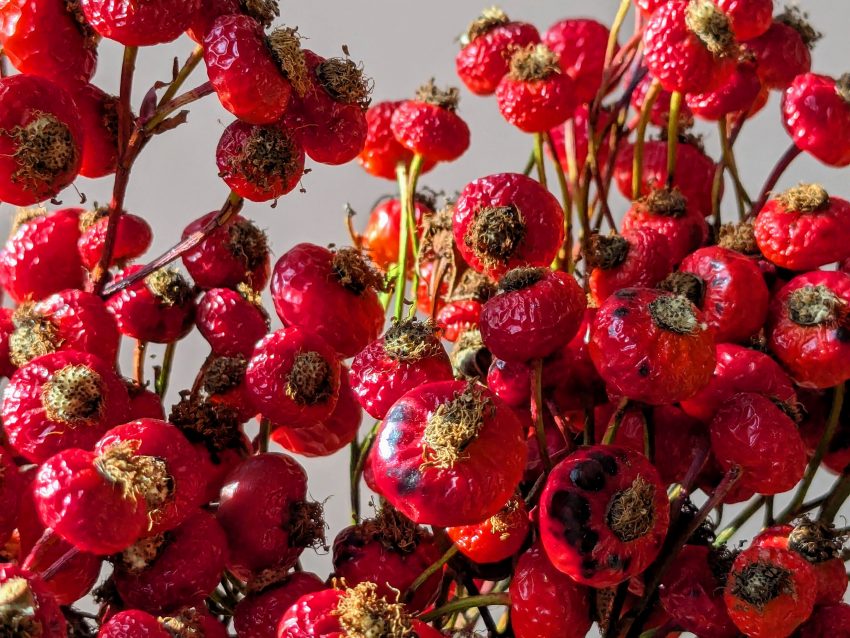Rose Hips add seasonal charm to bouquets and arrangements
If you have a garden you may well have some rose hips! If you pick them now, you can easily dry them to use for long-lasting colour throughout the winter months.
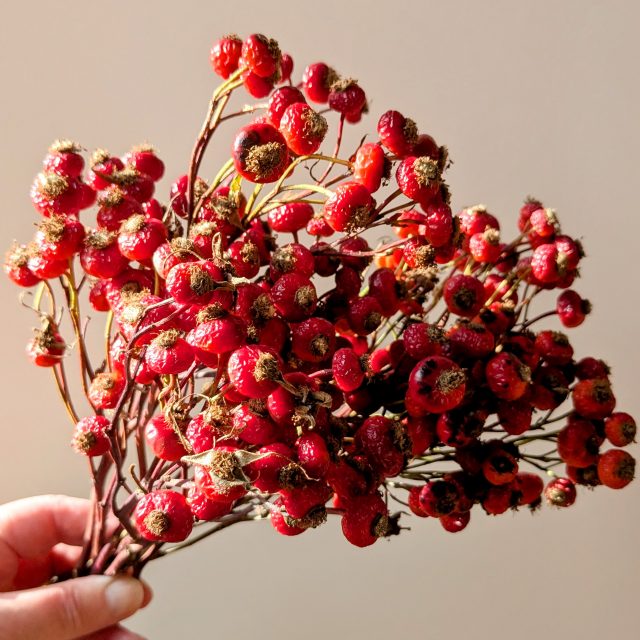
The image above shows ten stems of rosehips which I bought from a UK grower and dried myself. Stems of rose hips are readily available fresh from florist shops at this time of year if you’d like to dry your own. I was very pleased with the colour of these but I’m afraid I don’t know the variety.
You may alternatively be able to forage some. If you’re picking them yourself, you’ll notice that they come in all shapes, sizes and colours from orange and yellow through pink and scarlet to brown.
The pic below shows a wild hip of Rosa rugosa I found locally. It’s commonly known as the Beach Rose because it’s often found by the seaside in the UK. I believe it’s legal to forage for rosehips in Britain in certain circumstances as long as you’re not doing it commercially. You should be able to find many rosehips in hedgerows at this time of year, but do make sure you know the rules before you head out! Do be considerate of others and of the local wildlife.
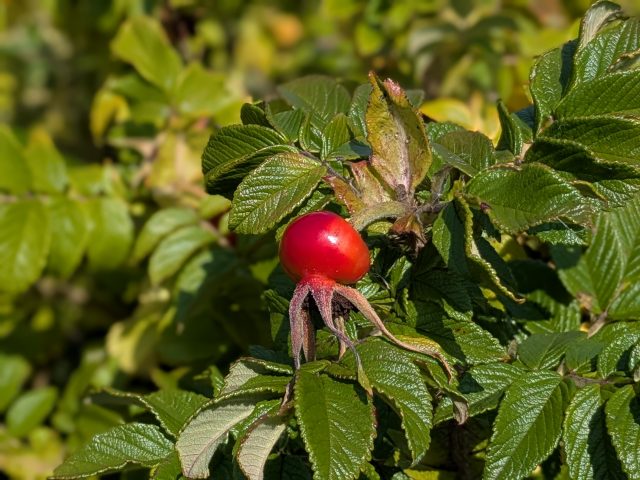
How to dry rose hips
If, like me, you’re keeping your hips on the stem for floristry rather than potpourri, here’s how:
- Tie a few stems together
- Hang up somewhere warm e.g. over a radiator
- Leave for at least two weeks – this may seem a lot but the little heads are quite dense. The cooler the room and the larger the hips, the longer they take to dry.
Tips
- Don’t bother picking damaged or unattractive hips. Drying won’t improve the look, no matter how optimistic you are!
- Once you think they’re ready, I’d leave them hanging for a few days longer because they still may be a little damp inside. It’s important to remove all the moisture to prevent them going mouldy once you put them to use.
- If you found some large rosehips like the Rugosa ones in the pic, they’ll take even longer to dry.
- For potpourri, remove the stems before drying and lay out in a single layer on a dish on a radiator for a week or so. Do keep them away from children and pets*
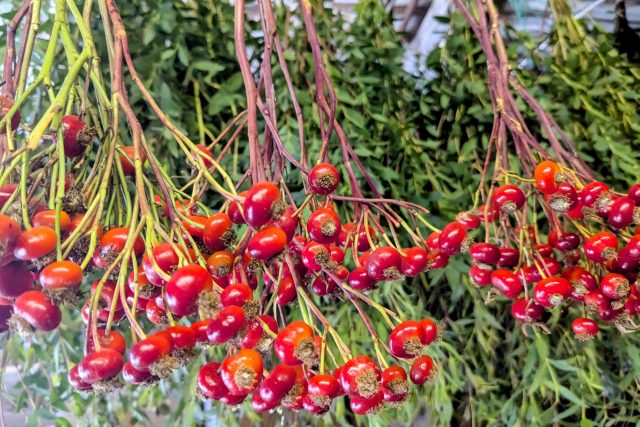
The image above shows my rosehip bunches hanging up to dry in my workshop – this is what they looked like fresh. In the background you can see a job lot of Cornish Eucalyptus parvifolia drying for work.
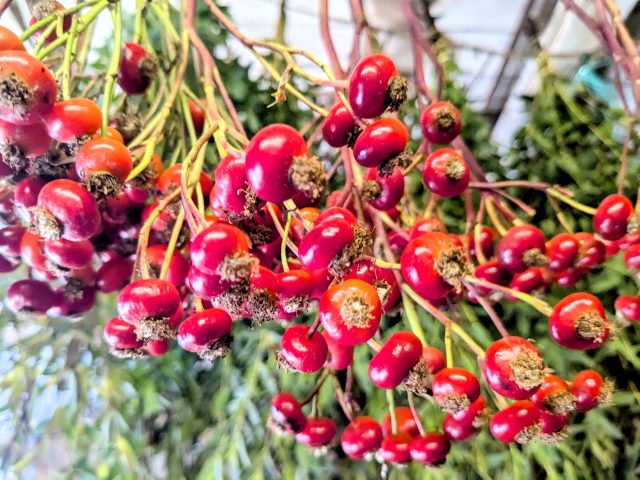
You can probably notice that the dried berries have wrinkles, however I thought the colour retention was very good!
Craft and floristry uses for rosehips
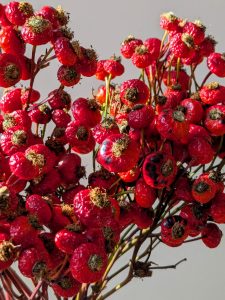 Why not try some of these:
Why not try some of these:
- Add rosehips to a mixed autumn, winter or Christmas seasonal dried flower bouquet.
- Use in making Christmas wreaths and garlands.
- Use these against pine or other dark green foliage for a fab contrast!
- Why not tie small sprigs onto your Christmas tree as a natural decoration.
- Use as part of an autumn or winter nature table alongside foraged pine cones, found feathers or other seasonal objects.
- Brighten a festive celebration table by mixing these in with foliage such as pine branches, holly and ivy. You can use these as a centrepiece or just a few sprigs on a napkin ring or table setting.
- Decorate Christmas gifts with natural seasonal stems like these, tied with raffia.
- As they’re dried you can continue to use these bright berries into the darker months of January to brighten your day!
*Do remember to keep berries away from children and pets. Rosehips are not edible as they’re full of little irritant hairs (traditionally used as itching powder). However the pretty colour does make them look like a tempting treat, so beware.
Follow these links to read more about
